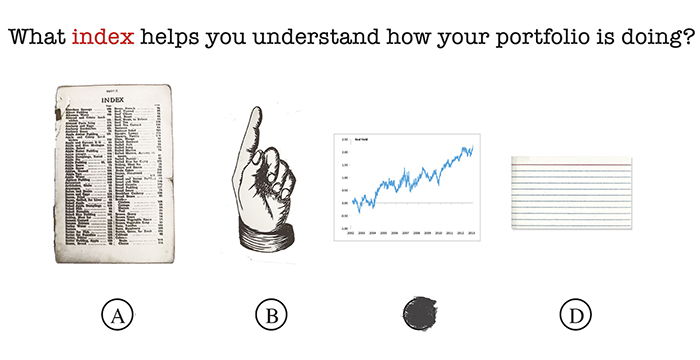
Models vs. Reality, Indexes vs. Investing Part I: What’s in an Index?

In recent posts (part I and part II), we covered some of the ways people try to determine how their investments have been doing, and how mismatched measures can generate misguided views. Determining your portfolio’s Time-Weighted Rate of Return (TWR) is one way to reach a relatively accurate sense of how your portfolio is doing compared to its most appropriate benchmarks during particular periods of time.
One good two-part series deserves another, so in our next two posts, let’s explore why even these benchmarks don’t always provide perfect comparison companions. First, an index may look a lot like the market, but it’s not an exact duplicate of it. Second, a fund may track an index, but it too can vary from its benchmark by a little or a lot … and often by design.
Let’s start by exploring how indexes compare to the market.
Benchmarks Model the Market … But They Aren’t the Market
A benchmark – usually in the form of an index – is a model for approximating the performance of a real-life collection of securities. It’s there is to simplify a complex arrangement, without losing the essence of it.
For example, the Russell 3000® Index is meant to model the “the entire US stock market” by closely tracking the performance of around 3,000 US stocks. That said, because an index like the Russell 3000® is not the real-life market, its managers must make challenging choices when building it. Here are just a few of the considerations involved (and there many others):
How many holdings are needed to create a meaningful model? The Dow Jones Industrial Average (DJIA) began tracking a scant dozen stocks in 1896, all taken from the US industrial sector. Today, it still tracks only 30 of the biggest US companies. Even so, it’s often positioned as being synonymous with “the market.”
Which holdings best represent the factor(s) being tracked? For example, what is a small-company stock? If the company thrives, when does it become large? If a company is based in the US but does most of its business abroad, is it domestic or international? Different indexes answer these and many other questions differently. There is no index-building bible.
How much weight should each holding represent? Some indexes, such as the DJIA, give each holding equal weight – an equal seat at the table, if you will. Others, such as the Russell US Equity Indexes, weight each holding’s results by its market cap: How much money (capitalization) has each player brought to the table (the market)?
For example, as described by the Irrelevant Investor, even though the Russell 1000® tracks some 2,000 fewer securities than the Russell 3000®, they both hold the same largest, market-cap-weighted holdings. As a result, they often report nearly identical results, as the biggest players’ movements dramatically overshadow those 2,000 extra smaller ones in the broader index.
What does all this mean to you? Even indexes that supposedly track the same thing – such as US small company stocks – may be built in very different ways. So, while an index can give us a pretty good sense of how a particular corner of the market is doing, the numbers are more an approximation than an absolute.
In our next post, we’ll explore why a fund’s performance may deviate as well from its closest benchmark index – and why, sometimes, that’s by design.
 SAGE Serendipity: The 2016 Rio Olympic Games are coming up and things are not looking golden in Brazil. Vocativ.com posted, A Brief History Of The Rio Olympics Trainwreck, a timeline of things gone wrong. And as if Zika virus and polluted waters aren’t bad enough, The Guardian came out with this headline on Monday – Olympics 2016: Brazil World Cup winner Rivaldo warns tourists to avoid Rio. Let’s hope things work themselves out!
SAGE Serendipity: The 2016 Rio Olympic Games are coming up and things are not looking golden in Brazil. Vocativ.com posted, A Brief History Of The Rio Olympics Trainwreck, a timeline of things gone wrong. And as if Zika virus and polluted waters aren’t bad enough, The Guardian came out with this headline on Monday – Olympics 2016: Brazil World Cup winner Rivaldo warns tourists to avoid Rio. Let’s hope things work themselves out!
 Secure Document Sharing
Secure Document Sharing


